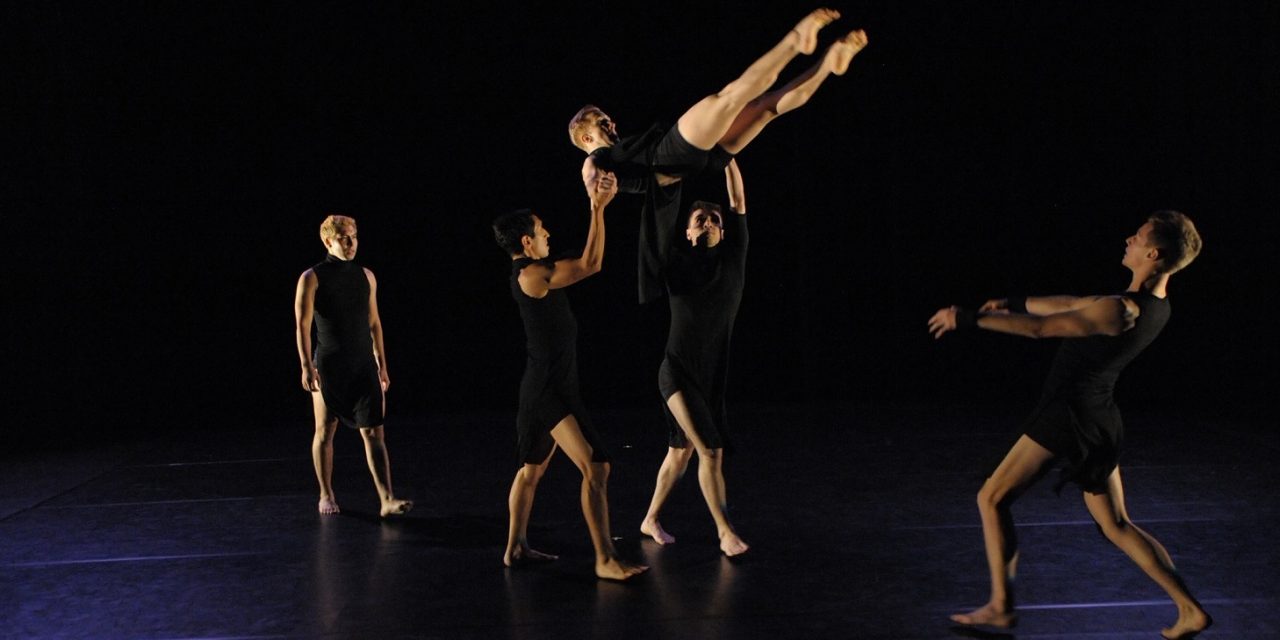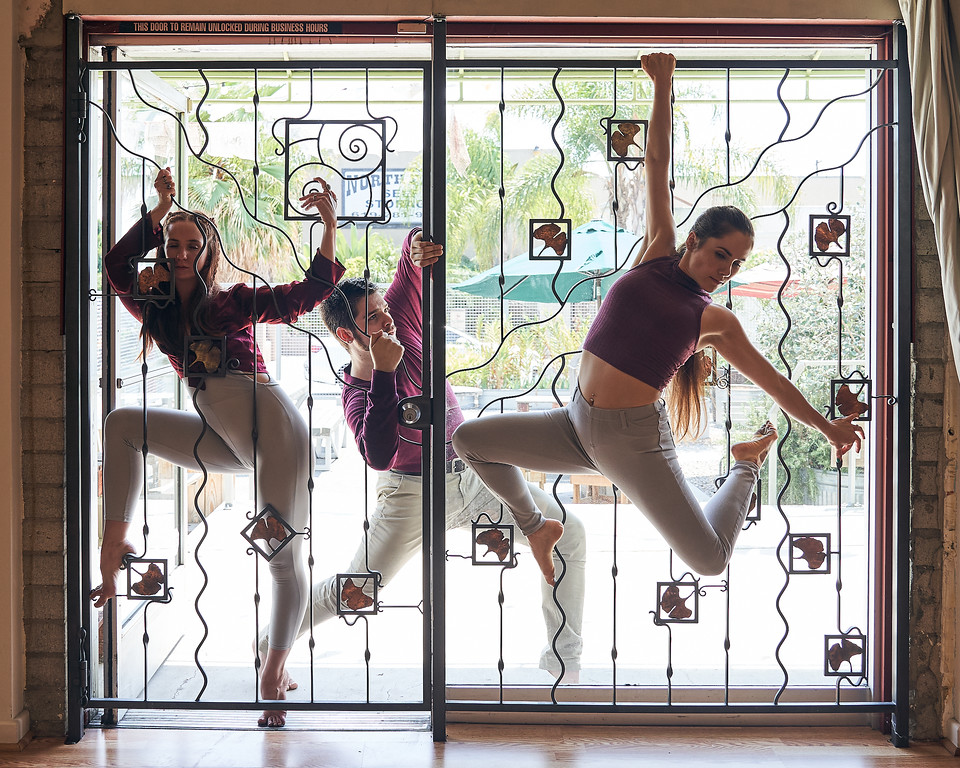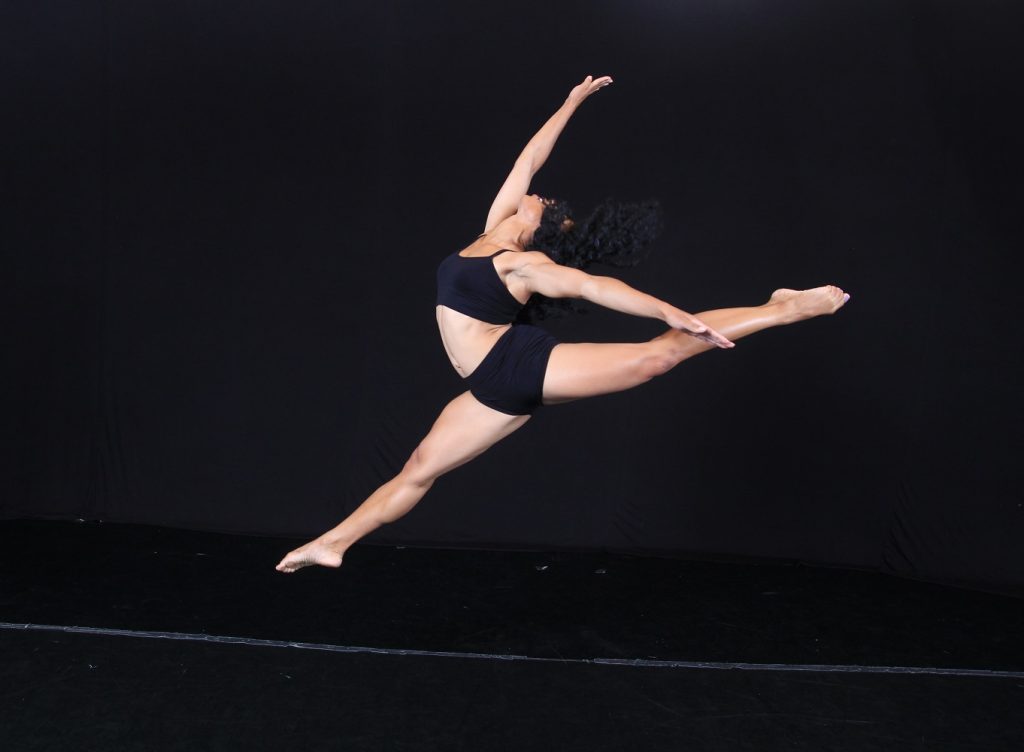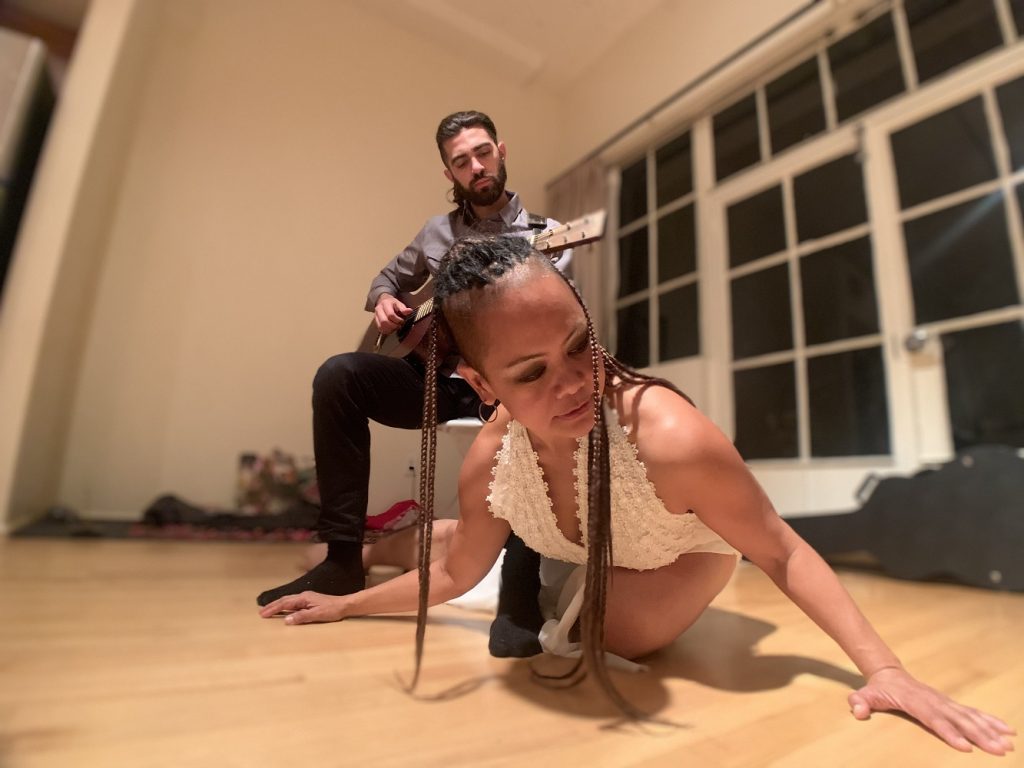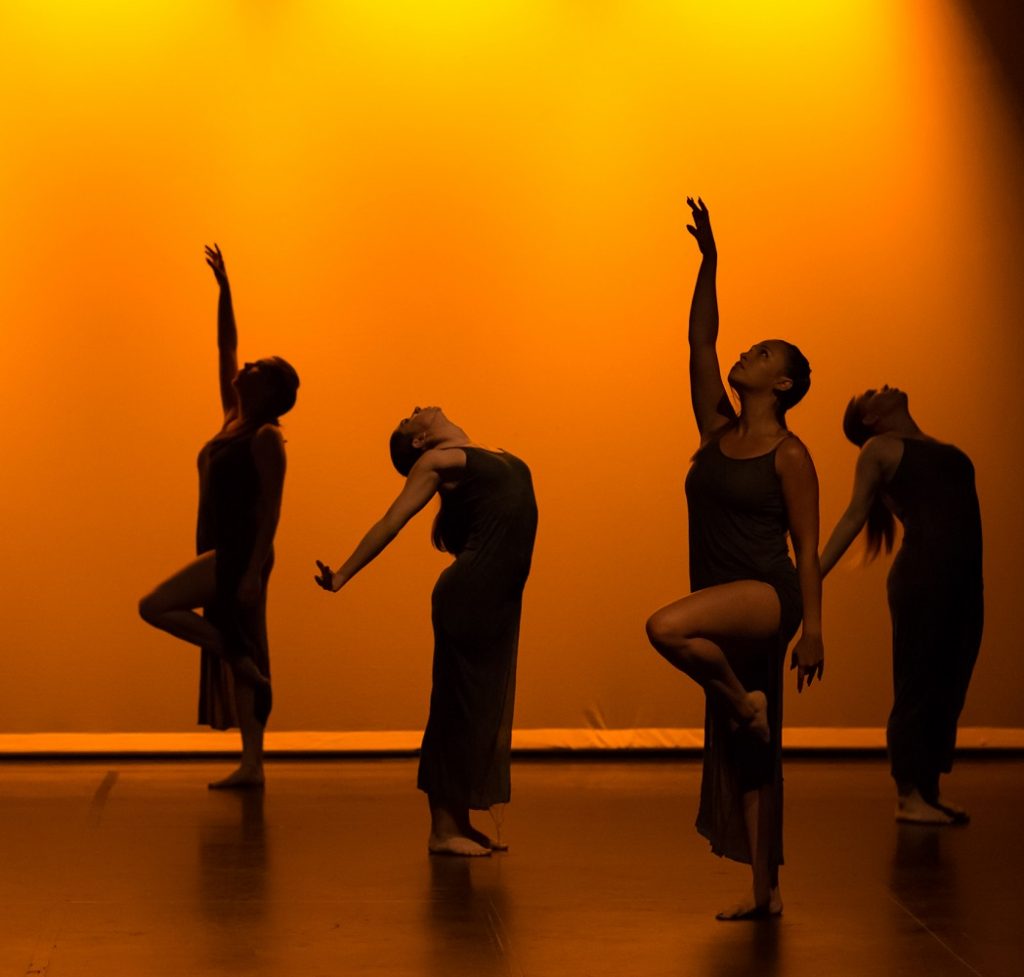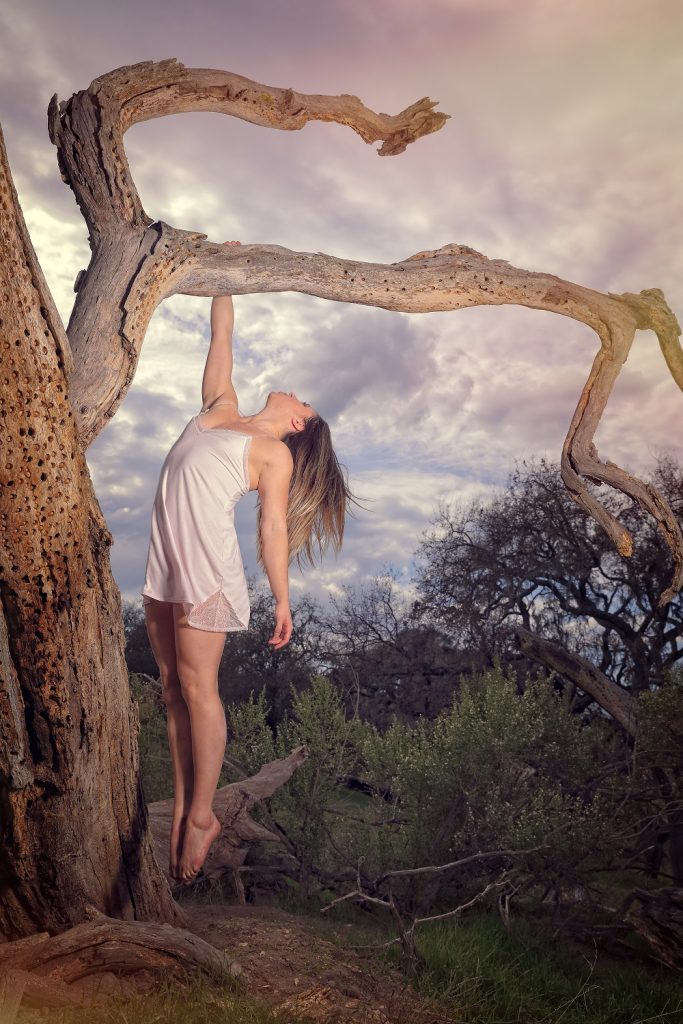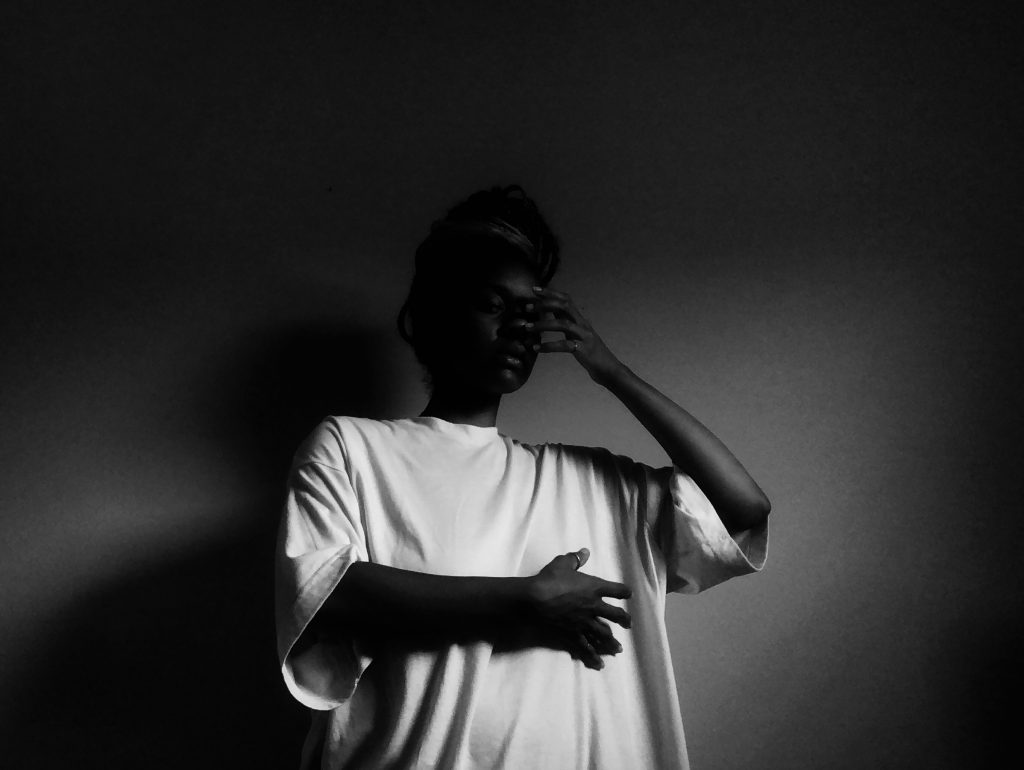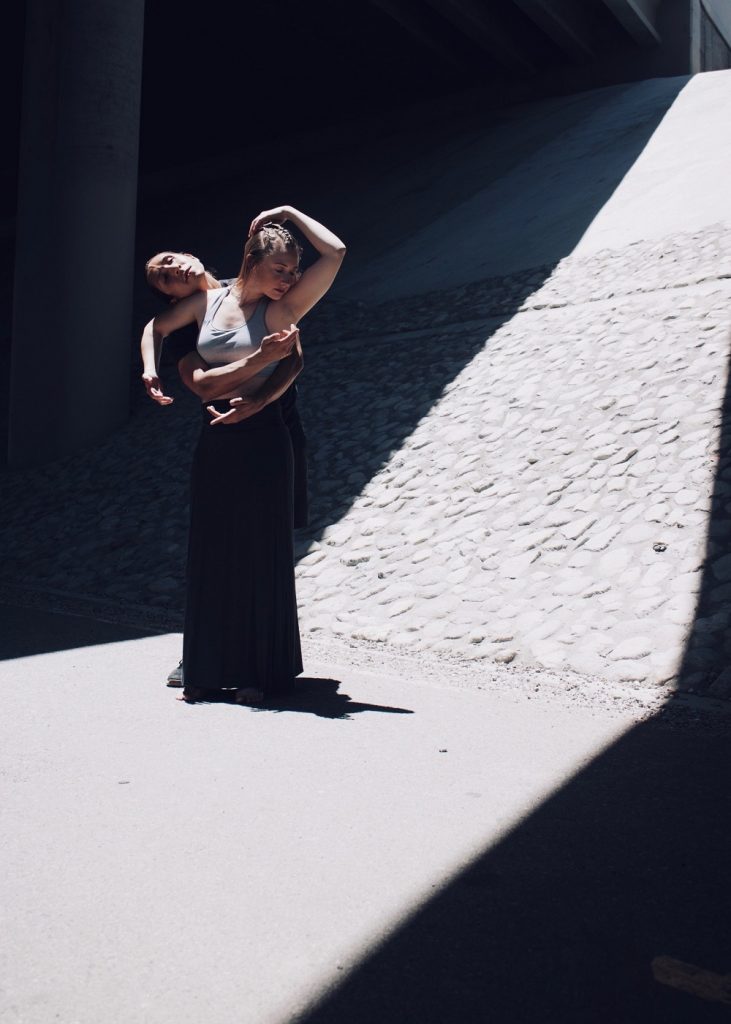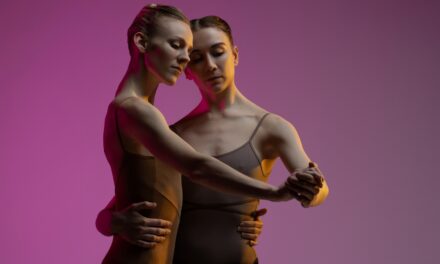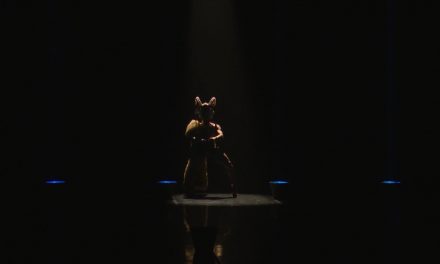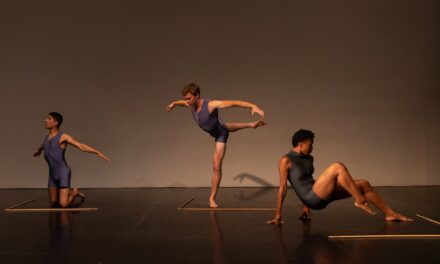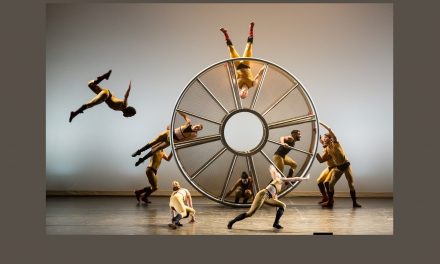Los Angeles Dance Festival’s FRINGE Showcase, co-produced by Brockus Projects and The Luckman Fine Arts Complex, took place on Friday, October 23rd, a virtual presentation of 14 works by different artists. The works had different style, flavor and locations. But there was a consistent thread, due in part, I believe, to the moment we are experiencing.
History has shown that in times of economic and societal hardship, there is a blossoming of creativity. All types of businesses are digging deeply for creative approaches to keep moving. But the arts feel most strongly the deep need to create – and to turn upside down the business of reaching the public and showing value. The courtship of dance and camera has had a long bumpy history. The current need to present dance virtually has pressed that relationship into a powerful, meaningful marriage.
Themes relating to isolation, and cravings for connection and freedom were expressed via differing concepts and execution. The sequence of the performances appeared to begin with more classic “modern dance” materials. The work that appeared later in the program grew in emotional intensity and drama.
The work was presented in this sequence:
The PGK Dance Project
Perspectives, choreographed by Peter G. Kalivas was danced by Jessica Kelley, Stephanie Vasquez, Chelsea Antczak, Shauna Tyser, Bryan Burns, Kyle Vaughn. Perspectives began with dancers entering a small indoor space with glass doors to the exterior. From that small home space, the dancers swept and rolled into an urban garden, where they had room to expand their movement. The camera took us swiftly, from one space to another, where the dancers explored, using their curiosity, movement and creativity. The final moment of confined frustration took place in a commercial space – a tiny room with a heavy door. A dancer crouched in this space, reached up toward the lock and the window, seeking release. Then she looked out at the viewer and stood. Director: Peter G. Kalivas; Cinematography: Ryan Kuratomi
Tashara Gavin-Moorehead
Sankofa was choreographed and danced by Tashara Garvin-Moorehead in homage to the majesty of the water, as visceral taste of ancestral memory, and a reminder that sinking in with nature is neither giving in, nor a fight. She dances, standing in ocean water, twisting her upper body, scooping up the sea and letting in run through her legs. Her undulating pelvis moves as a wave. When she casts off her scarf of magenta, she is transformed into the water maiden in white and pale blue, swirling more deeply in the water until she becomes the water itself. The music by Katalyst blended electronica with orchestral as human and wave were blended in the visuals.
Visionary Dance Theatre
Son of Cain, choreographed by Spencer John Powell, and danced by James LaRose, refers to the Biblical story of Cain and the mark put upon him, both a curse and a blessing. The solo dancer is in a small, dark theater space, silhouetted for much of the work, yet his movement is strong and clear. As he lunges, leaps, rolls and sweeps the space and the floor, he is clearly exploring. As he drops and rises, or carefully walks about, he seems to be seeking, and also submitting. As he exits, darkly silhouetted, it feels as though there was an awakening. The vocal accompaniment by Daemonia Nymphe helped us witness the journey.
retro vibe
Longing for Europe was choreographed by Annett Bone, directed and performed by Bone and Musician Thomas Mahar, with additional direction by Charles Conklyn. The setting is an oceanside garden/park, and the work visually explores the vast ocean view from the top of a cliff, the plantings, and the social space. The dancing traverses the different areas of the park, always referring to the ocean and to the sweet, soft guitar chords that form a melody of longing. We see and feel her long reaching arms and follow them across the ocean to Europe. Her steps and quick turns are elegant, and as she concludes the dance, she and Mahar bow to each other. Finally, the camera takes us across the sea. Cinematography/Editing: Charles Conklyn
Authentic: Grooves
Expose It was choreographed by Jamie Carr and the other dancers of Authentic: Grooves: Caitlin Barfield and Gaby Mulder. Music was by Marcus Carline. This work was an adventure, with fun and symbol merging and diverging in multiple spaces. The initial movement featured rhythmic gesture, in part because the dancers were in confined areas. Was it a game when socks were put on and removed (or vanished)? And we moved from the driveway to a house? When the group moved outdoors, there was more freedom to dance, until the blindfolds made their appearance. The dancers were confined without vision while free in nature. There were hugs upon release from the blindfolds, and the dancing in grass and leaves resumed. In each new space, new circumstance, another bit of the world was exposed, and so was each dancer.
Errant Movement
Lost Together was choreographed by Rachel Turner; danced by Selena Lobatto and April Torres. This work takes us from one physical/textural location to another and evokes a variety of different feelings. We start at an urban bus stop, then move to a gravel yard by a river. The solo dancer is seated at the bus bench, urgently jittering her feet. Then she’s up and off that bench, no longer alone, dancing in a gravelly flat space, performing arabesques, upper torso twists and rolling in the dirt – all in relation to the 2 folding chairs there. The two reposition the chairs, dance around, leaping, jumping, kicking – then slowing to a deep one-legged squat. Suddenly, back at the bus stop, they are in masks, shadows of themselves. A car goes by. They look at each other. End. Videography: Kevin McLemore, Jr. Music: Bensounds
inartwebreathe
No Divide was choreographed and directed by Christina Morales-Grace, and performed by Clarice Pacheco, Luis Cardenas, Victoria Lopez, and Jamie Burton. No Divide traverses a Los Angeles cityscape with artfully crafted hip-hop, grounded jumps, backward walks, suspended turns and a strong message of our deep need for unity and perseverance. The music/soundscape included words about this election year deftly melded with instrumental sounds that morphed from cello to guitar. No coincidence that one of the signs in the background read: Let’s Not Make This the Great Divide. As Morales-Grace eloquently said in her comments: “Dance can achieve things that words cannot. Inspire Change.”
PSYCHOPOMP DANCE THEATER
YLEM was choreographed by Shenandoah Harris, directed by Marcus L. Miller, and performed by Andrew Corpuz, Nicole Flores, Rachel Walton, Kaycee Jannino, Erin White, Abigail Chuah and Amanda Adams. The title YLEM refers to the primordial matter of the universe. The performance took place in a black box theater space and featured pinpoint lighting and sidelight to create specific focal points. There was a sense of ritual and mystery in this work, heightened by the energy of the group. There was a strong geometry in the spatial design, and the dancers worked from one figure to another using rolling, turning and twisting movements in a group. A lone dancer appeared from the dark and the group worked as a chorus, dancing around him, reaching to touch him as he appeared to be engaged in a fight with the floor, the air and even himself. In this work we saw more touch among the dancers than in most, and the supported rolling, pushing/pulling was played with softness, followed by sharpness. The contrasts created a flow to another chapter, with duos forming and changing. The movement was sensory – with crawling, writhing and a delicious moment when a dancer leaned into the upraised 2 legs of another who was lying on the floor. The soloist looked up and was pulled back down into the writhing group. Lighting Design by Melissa Hartman.
leah hartley and drew ofthe drew
Interstellar Rainbow, choreographed and danced by Leah Hartley, was a complete change of flavor. The title refers to a rare astral phenomenon where x-ray light is reflected off dust clouds, allowing scientists to measure distance between earth and a formerly incalculable star system. Hartley’s production was stellar. She began in intense red light, with deep shadows, clenched in a ball, making percussive motions with her head. She rose and as she reached up, unfurling her hands, the shadows grew larger. A sudden flash of color took us to a small theater space, where flashes of light/color coincided with a striking costume change/reveal – brilliant white. Then multiple images appeared, and she teetered and circled with leg gestures. She morphed again, and in the end a man enters the tiny space and unzips her vivid yellow suit. This work was a shock, and I was reminded of the stunning mid-century color field paintings by artists like Mark Rothko. Cinematography, editing and music by Drew ofthe Drew.
pcw: cyan cian
2323 Black Luna, choreographed by cyan cian, was an ode to crossings, pilgrimage and magic. It was a word and light painting with dance, provocative with a purpose. Normally, this writer diligently takes note of the movement, parsing the details. In this case, I was taken completely by the geometric interchange of light and human figures. The addition of sensual nudity expressed the dichotomy between spiritual and political. In the end, I noted that we cannot really see ourselves. The artist herself wondered what does it look like when you find your world? 2323 Black Luna was directed and edited by Paris Cian and performed to music by Tru Sound, and Paris Cian.
Dharma in Motion
Light and Dark of Grief, choreographed and danced by Seónagh Kummer, was an emotional tour de force, eloquently rendered at the ocean’s edge, before a vista of a distant peninsula and rows of clouds. At first we see Kummer wading in the shallows, and we hear the words of Elie Wiesel, “For the dead and the living, we must bear witness.” The swirling of the water, and that of her hand in the shallows, are wistful but sweet. She wades away and immerses herself, her purple dress floating. As she comes up, she grasps shells in her hand. After walking with the open clams, gesturing toward her face and neck, she lies again in the shallows. She releases the shells, rolling onto her side. In a sudden shift we see her lying on her side, soaking wet, atop a massive rock. Suddenly, the camera looks to the water where we see the disembodied dress lopping with the movement of the water. Videography for Light and Dark of Grief was by David Kummer; Editor was Seónagh Kummer.
FUSE Dance Company
Allied (AlphA excerpt), choreography and videography by Joshua D. Estrada-Romero, was danced by Kathy Duran, Stormy Gaylord, Stephanie Lin Ocampo, Joseph Lister and Edward Salas. Estrada-Romero described the work as an exploration of the difference between dominators in any system. The setting appears to be a museum plaza, the musical score is tense, but quietly thumping. Five gorgeous dancers appear walking as sculpture, where they form an oval and perform solos, then alternate duets and trios. The movement ranges from slow and attenuated to sharp changes of head and arm gestures. There are deep lunges that emulate martial arts poses; a perilous moment when a dancer lies on the edge of a hole. We see dancers rolling down an incline, then suddenly, all the dancers appear above the line of sight, atop a diagonal strip of concrete where power lines/towers are in view. The costumes were by Joshua D. Estrada-Romero, with music was by Emptyset.
To visit the Los Angeles Dance Festival website, click HERE.
To visit The Luckman Fine Arts Complex website, click HERE.
Written by Mary Pat Cooney for LA Dance Chronicle.
Featured image: FUSE Dance Company – Photo by Edwin Lockwood, courtesy of LADF

